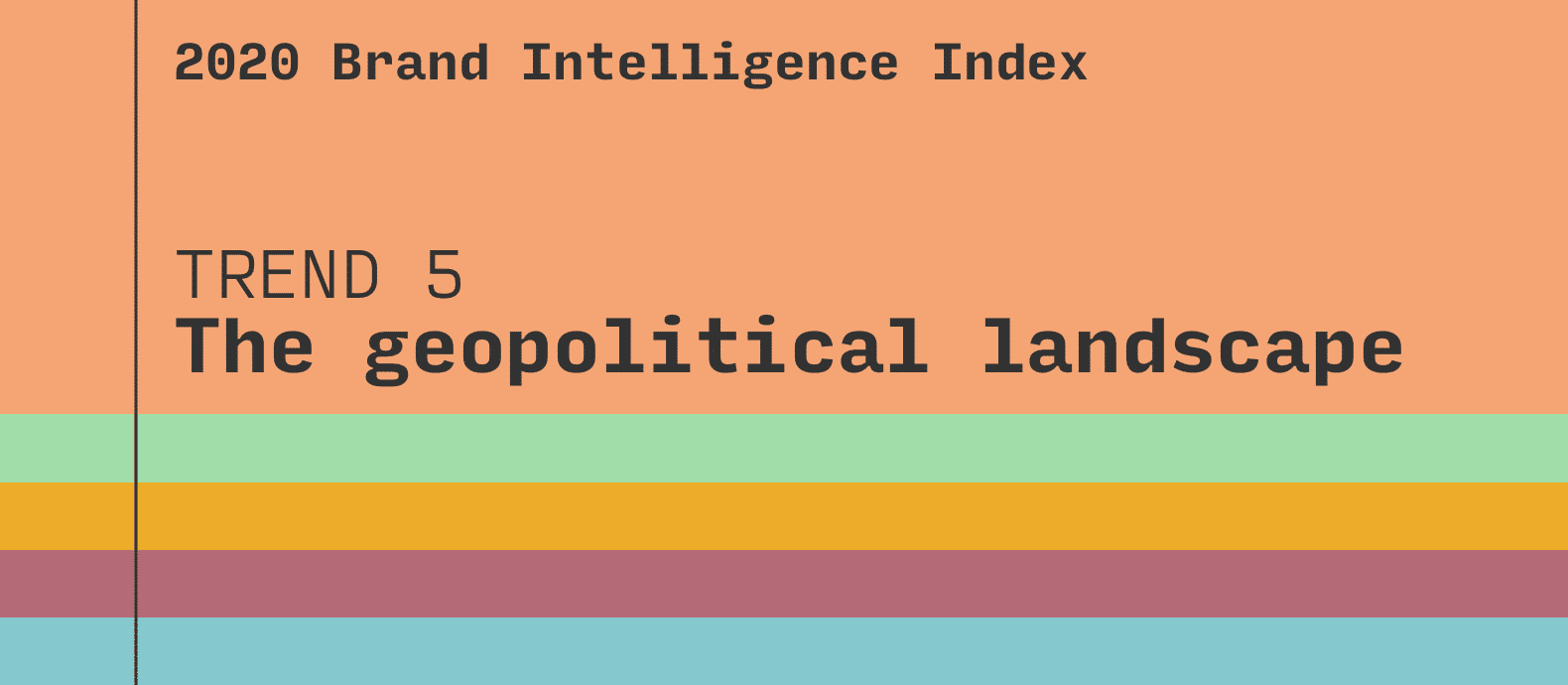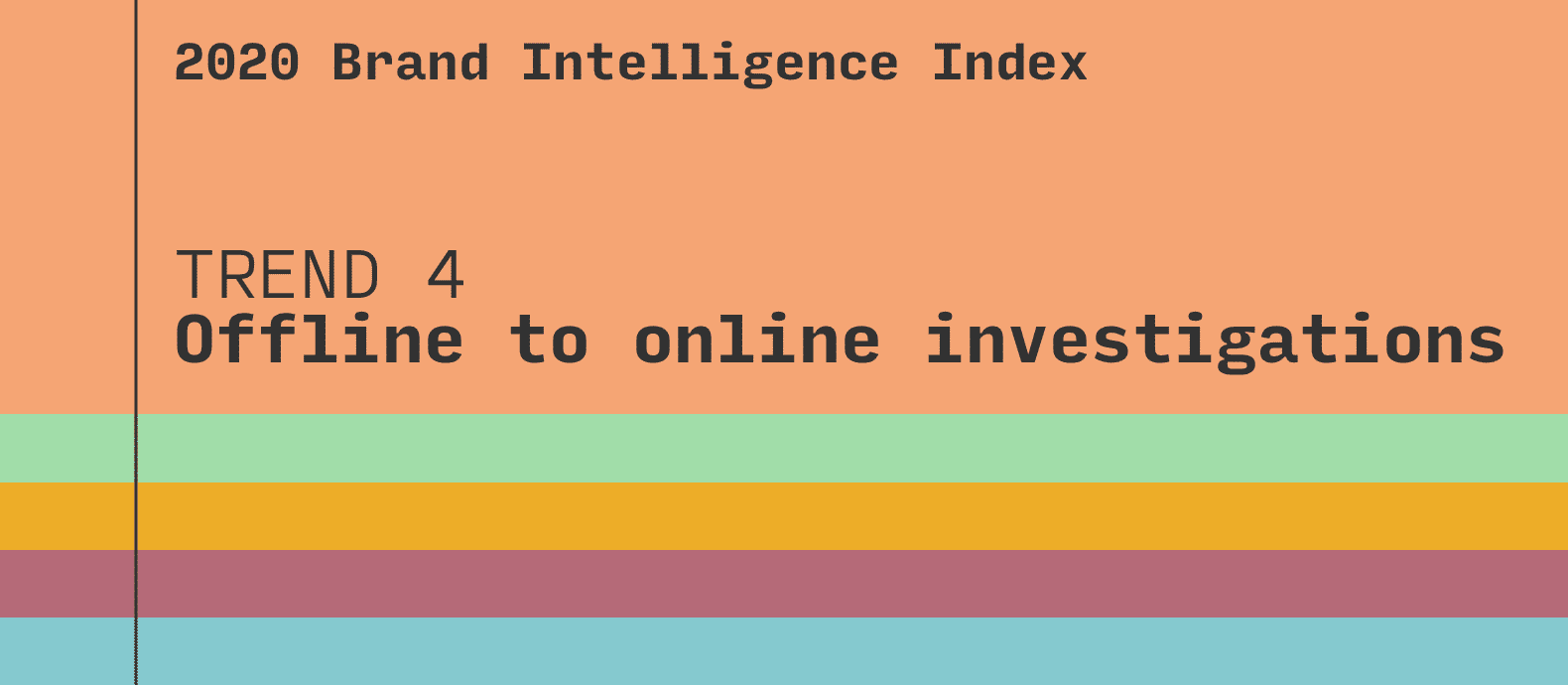As globalization shrinks the world, new challenges continue to arise for brands that do business across borders. The US-China intellectual property trade war, Brexit, and the EU copyright directive are just a few geopolitical events that are affecting IP in the world.
Red Points’ Brand Intelligence Index incorporates IP experts’ opinions and survey data to illustrate five trends that are shaping brand protection and intellectual property. Other trends include counterfeit dispersion across channels, transformations in technology, and gray market threats.
Summary:
- New US-China trade agreement is promising—if it’s enforceable
- The UK will create comparable IP rights for EU rights-holders at the end of the transition period
- EU Directive on Copyright requires content platforms to be vigilant about removing protected works
Check out other IP trends from the Brand Intelligence Index:
- Trend 1: Counterfeit Dispersion
- Trend 2: Beyond the Black Market
- Trend 3: Transformations in Tech
- Trend 4: Online & offline anti-counterfeiting investigations
US-China trade war: intellectual property on center stage
Making decisions is even hard for people on a small scale—for example when two people are figuring out where to eat lunch. Multiply that a thousandfold, and you have the US-China trade war. Each side has specific objectives, and neither wants to compromise. On January 15, 2020, after almost two years of back-and-forth talks and tariffs, President Trump and Chinese Vice Premier Liu He signed phase one of a trade agreement. The 91-page agreement has seven areas of focus, which are:
- Intellectual property
- Technology transfer
- Food and agriculture
- Financial services
- Macroeconomics and exchange rate policies
- Expanding trade
- Dispute resolution
Valentine’s Day 2020 is the next major deadline in the ongoing saga. The phase one agreement requires China to put forth an action plan on how it will fight IP theft 30 days from signing, which is February 15th. There’s a chance that the two countries might not see eye to eye on the action plan moving forward, and Trump could deny the plan.
According to a 2017 report by the U.S. Trade Representative, Chinese IP theft costs the U.S. between $225 billion and $600 billion each year. The provisions in the agreement could do a lot to turn that around—if they are enforced. What China’s government decrees and what its local companies practice can be two different things.
For the past few decades, Chinese manufacturers haven’t held intellectual property law in the same regard as the United States. While the phase-one agreement is promising, it is unlikely that deep-seated habits of business can change within 30 days, or even a year or two.
The trade agreement requires China to step up IP enforcement at physical markets, at border control, in the online environment, on e-commerce sites, and in other areas. It also requires China to increase minimum and maximum penalties for IP theft or infringement convictions. Here are a few lines from the text:
- “China shall provide that e-commerce platforms may have their operating licenses revoked for repeated failures to curb the sale of counterfeit or pirated goods.”
- “China shall provide enforcement procedures that permit effective and expeditious action by right holders against infringement that occurs in the online environment, including an effective notice and takedown system to address infringement.”
- “The Parties shall take sustained and effective action against copyright and trademark infringement at physical markets. Measures China shall take include significantly increasing the number of enforcement actions beginning within four months… and publishing online quarterly updates of enforcement actions at physical markets.”
Another point of concern is addressed by the second chapter in the agreement—technology transfers. Up until now, if a foreign company wanted to open a research center, factory, or branch in China, they had to create a joint venture with a local party and turn over commercial secrets as a condition of doing business. Unfortunately, many of these secrets tend to end up in the wrong hands and become sources of counterfeit products. The agreement lays out the following in relation to this issue:
“Neither Party shall require or pressure persons of the other Party to transfer technology to its persons in relation to acquisitions, joint ventures, or other investment transactions.”
Again, how and when this will be enforced is the question. China had already passed a law earlier in 2019 to ban forced technology transfers, but it hasn’t been very effective. Of all the geopolitical events going on, experts thought about the trade war the most, with 37.4% expressing concern.
How will Brexit impact intellectual property?
The possibility of a no-deal Brexit in 2020 has been postponed, but it still lingers for 2021. On January 31, 2020, the UK and the EU ratified the Withdrawal Agreement and entered a transition period. If talks between the two parties don’t lead to a trade deal ratification by 2021, the UK would leave in a no-deal Brexit which could mean tariffs for both sides.
Patents are registered through the European Patent Office, a non-EU agency, so they will remain unaffected during the transition period or afterward. Copyrights within the UK and EU are governed by international treaties and will also remain unaffected.
EU trademarks and designs will continue through the transition period. On January 1, 2021, the UK will automatically create comparable IP rights for each of the EU trademarks and designs. The goal is to continue the same level of protection for rightsholders after the transition.
While brands shouldn’t have much to worry about in terms of IP registration after the transition, they might see more activity from gray market sellers. If a trade deal isn’t reached, some authorized dealers may have to tack on an extra 10% or more to account for new tariffs. That could create a scenario for gray market sellers to undercut authorized dealers with prices that are a lot more attractive to the public. And if authorized retailers stock fewer items, counterfeiters could jump in to satisfy the demand.
EU Copyright Directive
While the spotlight is on Europe, we want to mention the EU copyright directive—officially the Directive on Copyright in the Digital Single Market. This directive was adopted by the European Parliament almost a year ago—on March 26, 2019—so member states have about one more year to enforce it. The directive is made up of a number of articles, but Article 17 (former article 13) is one that has received a lot of attention.
Article 17 increases the liability of content platforms to monitor and remove protected material. Under previous laws, content platforms (like Facebook and YouTube) were mere conduits and not responsible for removing protected works. Now, Article 17 maintains that platforms are subject to copyright law when they upload and disseminate content.
According to the directive, platforms have to seek licensing agreements with creators. The websites are only exempt from liability when they prove they were unable to secure a license, they have taken the offending work down quickly, and have taken measures to prevent the work from being uploaded again in the future.
While the directive doesn’t specifically require platforms to create and use filters to monitor content, many large platforms will (or already use them). The issue is that algorithms can have a hard time separating legal uses like a review or parody from illegal uses of copyrighted works. The directive doesn’t hold all content-sharing platforms to the same standard, though. Smaller platforms that are less than three years old will only be required to seek licenses and remove infringing content quickly, not keep new versions from being uploaded.






